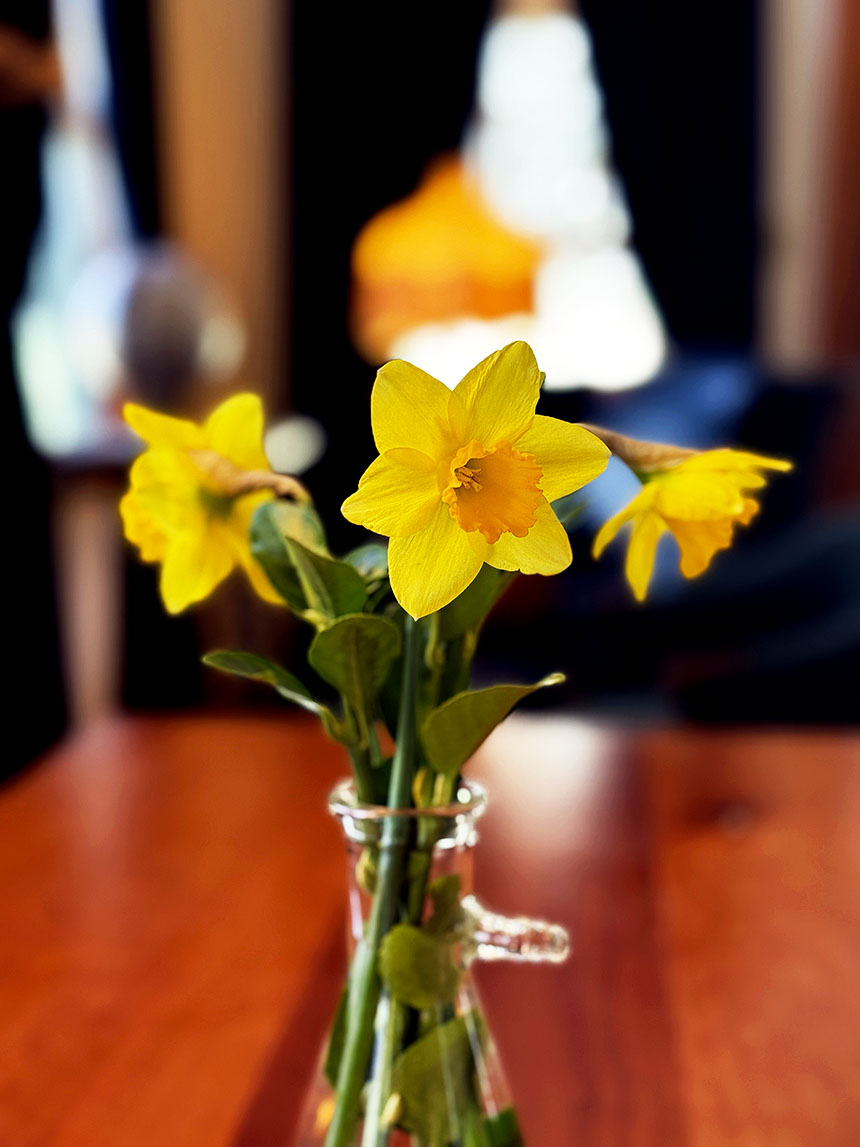
Shot with iPhone 16 in portrait mode, 2x zoom. Click here for high-resolution version.
I think of the iPhone camera as a snapshot camera. But really it has much more potential than that. I take the phone’s camera for granted because most of the time I can just point and shoot and get a decent photo. But getting the shot of the daffodils that I wanted today actually sent me to Google with some questions.
Shooting in “Photo” mode, the background was entirely in focus, even in the interior light. If I were shooting with my Nikon D2X, I would just set a wide aperture, and that would blur the background. The question I asked Google (silly me!) was, how do I set the iPhone f-stop? Google said: You can’t set the f-stop on the iPhone. Use “Portrait” mode instead, and that will blur the background. So that’s what Portrait mode is for!
This blurring of the background is very important in photography. It’s called “bokeh,” and one of the ways lenses are rated is on the quality of their bokeh. With portraits, of course, though the background may be very important, one wants only the face in focus. And that’s true not just with portraits but with any photo in which the photographer wants only the subject of the photo to be in focus, with everything else blurred just to the right degree.
As an experiment, I tried to shoot the daffodil photo above with my Nikon D2X. I found that it could not be done without a better lens than the light-hungry 28-85mm lens that I normally use, plus some extra lighting, and/or a tripod. The interior light was just too dim for the lens, though the aperture was wide open.
It seems I shoot daffodil portraits pretty much every year. Here are a couple of others.

Shot with an iPhone 12, March 3, 2024. Not in portrait mode, 1x zoom. Click here for high-resolution version.

Shot with Mamyia RB67, 250mm lens, with tripod, Kodak film, March 10, 2018. That clearly was a better daffodil year than this year, after a cold winter.
